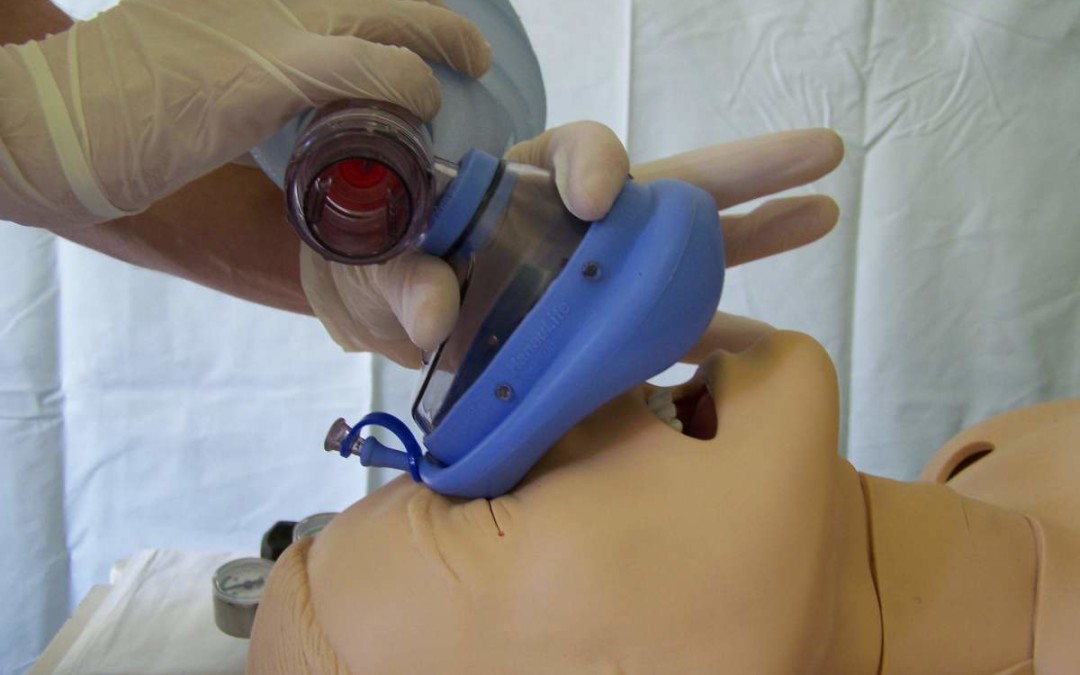Assisted ventilation with a mask and self-expanding balloon usually refers to a method of providing breathing support to a patient, often during medical emergencies. Here is an explanation of the components and procedures involved in this technique:
Assisted ventilation: This refers to the process of helping a patient to breathe when they are unable to do so effectively on their own. It may be necessary in a variety of situations, such as when the patient is unconscious, in respiratory failure, or during cardiopulmonary resuscitation (CPR).
Assisted ventilation ensures that the patient receives enough oxygen to maintain proper blood oxygenation. Mask: A mask, often called a “pocket mask” or “ambu mask,” is a medical device used to deliver positive air pressure to a patient. It consists of a mask that is placed over the patient’s nose and mouth, creating a seal to prevent air leakage. The mask is connected to a bag-type container that can be manually squeezed to deliver breaths of air or a mixture of air and oxygen to the patient. Self-destructing balloon: The term “self-destructing balloon” is not a standard term in medical equipment. You may be referring to the self-inflating bag, which is a key component of the mask device. The self-inflating bag has a built-in one-way valve and a reservoir that automatically refills with ambient air after each squeeze. This feature allows healthcare providers to provide inspiratory pressure without the need for an external oxygen source. The mask-bag assisted ventilation procedure involves placing the mask over the patient’s face, ensuring proper fit, and then compressing the bag to deliver breaths of air. Healthcare professionals must coordinate ventilation to avoid overstressing the patient’s lungs. The goal is to ensure adequate oxygenation and ventilation, while being careful not to cause lung damage.
This technique is a basic skill in emergency and intensive care medicine, often used to stabilize a patient’s breathing until more advanced methods of airway management and ventilation are established. It is important to receive proper training in order to perform assisted ventilation correctly and safely.
When taking care of the airway, one of the very important skills is knowing how to perform artificial respiration using a mask and a self-inflating oxygen bag. We use ventilation with a mask and a self-inflating bag when the person is not breathing or not breathing enough, so additional ventilation is needed.
Kits usually include a self-inflating bag with an oxygen cylinder, which has a port for connecting to an additional oxygen source. Then we have masks of different sizes for children and adults (0-5), which should be transparent and anatomically shaped. The self-inflating bag depends on the patient’s age (for adults or children). The self-inflating bag has a one-way valve (allows ventilation by pressing the bag towards the patient and does not allow exhaled air to enter back into the bag or container). For adults, a bag with a volume of 1600 ml is usually used. Ventilation using a mask and a self-inflating bag can be performed by one or two people. This is a technique that needs to be practiced regularly to maintain the skill.
PROCEDURE:
- Assess security.
- Rate the person according to ABCDE.
- Lay the person on their back.
- Choose the size of the mask and balloon.
- Position yourself above the patient’s head.
- Open the airway by tilting the head and lifting the chin only if you do not suspect an injury.
- Check the oral cavity for the presence of foreign bodies.
- Remove the obstruction if it exists and is visible in the oral cavity.
- Use and place one of the aids (oropharyngeal or nasopharyngeal tube).
- Do not delay ventilation in order to place the aid.
- Place the mask so that the narrow part goes above the bridge of the nose, and the wider part between the lower lip and the chin.
- Hold the mask firmly with the index finger and thumb, and with the other fingers keep the airway open by lifting the chin.
- Press the mask well on your face and take a breath by pressing the balloon (do this every 5-6 seconds).
- Watch for resistance during ventilation. Excessive compression of the balloon can cause increased pressure in the upper airway and increase the risk of air entering the esophagus, which can result in vomiting and possible aspiration of stomach contents.
- Watch the chest rise and fall. If the chest does not rise properly, suspect airway obstruction. Try to open the airway better.
- Monitor vital signs, auscultate the patient.
- If you perform cardiopulmonary resuscitation and perform heart massage, and the airway is not secured, perform ventilation in a ratio of 30:2, 30 chest compressions, then two breaths.



0 Comments